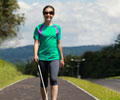Deaf children are able to develop their own sign language for communicating with others as they grow, just as children with conventional spoken language, according to a new study.
A new study has found that deaf children successfully develop their own sign language as a means of communication with others as they grow older, just like kids who don't have any hearing difficulties pick up the conventional spoken language.
The researchers have found that deaf children invent their own way of communication with help of hand signs and homemade language-like gesture system."Other studies on this 'homesigning' have usually stopped at the point the children go to school, but I have been able to follow children in Nicaragua who are not near a special education school and accordingly continue developing their homesigns independently," said Marie Coppola, a Research Associate at the University of Chicago.
The study showes that signs made at home might contribute to new sign language.
"Since 1996, I have been working with deaf adolescents and adults in Nicaragua who have not learned Nicaraguan Sign Language, but who have invented their own sign languages that they use with their families, friends and neighbours," she said.
"I have learned that these small languages have many characteristics of languages that are signed and spoken around the world," she added.
Coppola observed Nicaraguans using gestures frequently when they spoke, and noticed many a sign, such as those used to describe eating, were consistent in their form.
Advertisement
Nicaraguan leaders had set up a special education school for deaf children in Managua, but staffed it with teachers who did not use sign language, so that they would try to get the children to speak and read people's lips, in order that they could better adjust to the speaking world.
Advertisement
"When children and adolescents first came together at the school (the Melania Morales School for Special Education) in the late 1970s, they brought with them their homesign systems," said the researchers.
These signs and ways of combining signs into sentences that children used at home served as the seeds for the new sign language that developed as they began interacting with each other regularly.
The findings were presented at the annual meeting of the American Association for the Advancement of Science.
Source-ANI
TAN/L











